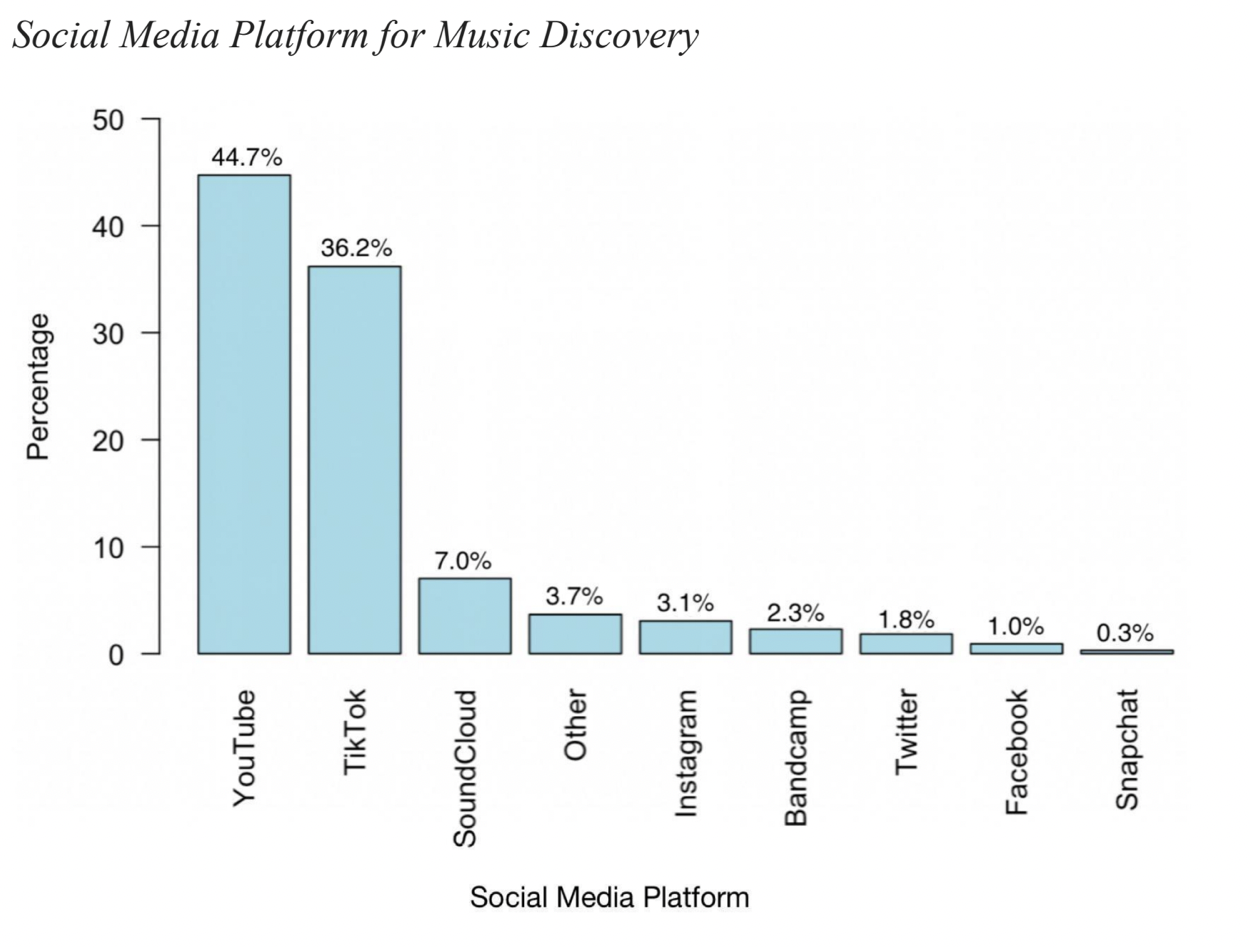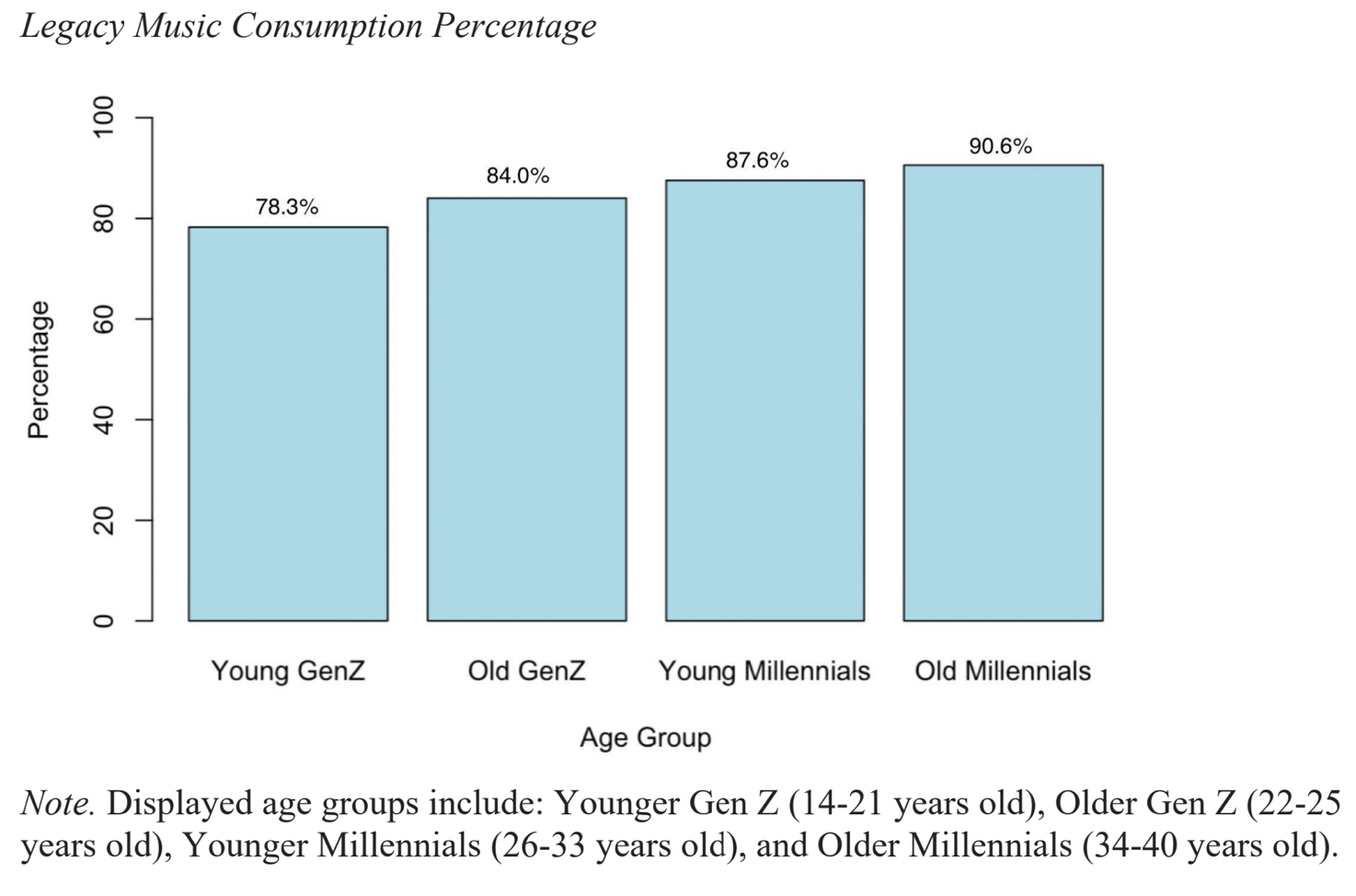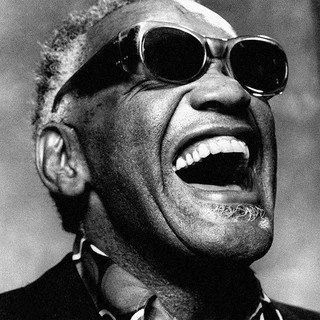By: Chloe Hampton, Samantha Hazlett, Amanda Molloy, Morgan Schabhuttl, Lee-Ann Shaw, and Ruoyun Tang
Executive Summary
Les Paul was an American musician, pioneer, and philanthropist who is credited with inventing many principal recording techniques including multi-track recording, echo, reverb, and digital delay, as well as having had a hand in innovating the solid-body guitar. In addition to his inventions, he achieved six Grammy Awards, 36 Gold records, two Emmy Awards, 11 #1 pop hits, and is included in 20 Hall of Fames. In 1995, Les Paul established a grant-providing foundation, the Les Paul Foundation, to support music education, production, innovation, and medical research related to hearing.
The following research was designed to gain an understanding of the legacy artist to further develop the Les Paul brand and increase recognition surrounding his name. The research team examined strategies for re-introducing Paul in an over-saturated media climate to younger generations through both quantitative and qualitative analysis. Based on findings across primary and secondary research, recommendations were made to the Les Paul Foundation providing several innovative ways to connect the oeuvre and technology of Les Paul to current and younger generational audiences.
Below are key insights from the team’s research:
● YouTube and TikTok are the most impactful social media platforms for music discovery.
● A consistently effective strategy across all artists includes the release of remastered music, collections or box sets, and previously unreleased audio and video.
● Legacy artists are typically defined as those with an enduring body of work known across generations and that have made a broader impact on popular culture.
● Modern music and artists would not be where they are today without Les Paul’s inventions and contributions to the music industry.
● Sync licensing brings awareness to an artist/band, leading the audience to engage and utilize their purchasing power on merchandise and other artist items.
● The most common methods for people to consume music are through streaming services, followed by radio and downloaded music such as iTunes.
Additionally, The Les Paul Foundation can fully immerse on social media like Snapchat, building a strong brand (the person) presence, demonstrating Les Paul's achievements and endeavors. The team proposes connecting consumer identification of Paul’s works to education, understanding how relevant his works are today, like how children correlate American inventors. By delving into the history, music, and contributions of Les Paul, creatives can help younger generations recognize and appreciate his similar associations from the inventors.
Importance of the study
Although Les Paul received many accolades for his work, the Foundation faces the challenge of ensuring his legacy lives on. To do so, the Foundation needs to develop ways to resonate with younger generations like Generation Z (ages 10-25) and millennials (ages 26-41) (Warren, 2022). Legacy artists need to create intergenerational cohesion with their catalog of music throughout each decade so that they continue to have recognition beyond their producing years and lifetime. This project develops an understanding of the legacy artist while examining ways to expand the Les Paul brand beyond the guitar and bring lasting recognition to the artist’s name. It is essential to highlight older works of legacy artists, as these often serve as inspiration for modern artists and influence contemporary music. Moreover, studying legacy artists provides significant insights into the evolution of music, culture, and trends over time.
Current State of the Music Industry
In 2023, the music industry faces both successes and challenges due to the technological advancements of this time. These advancements have aided in the consumption, creation, distribution of music, and merchandise. Streaming platforms and social media outlets give listeners unlimited access to artists' works. However, this causes artists and labels to face ongoing conversations with streaming services and social media outlets on what is fair compensation for artists. Another issue is to evaluate the volume of content and oversaturation on these platforms, making it challenging for artists to gain visibility in the music industry.
Technology has significantly impacted how millennials and Gen Z see the world. The first generation to have 24/7 internet and social media access for the entirety of their life was and still is Gen Z, resulting in their view of the "physical and digital worlds as a seamless continuum of experiences that blend offline and online information for entertainment, commerce, and communication" (Petrock, 2021). Spotify data reinforces this note, as it confirms that the Gen Z demographic tends to "listen to a broader selection of artists from different countries than any other age group” which in turn highlights the need for brands to take a multicultural approach to curating musical experiences (Rafferty, 2022). It is critical to keep this perspective in mind when marketing toward these generations and as we develop our recommendations for the Foundation aimed at this specific demographic cohort.
Les Paul Model Guitar
Image Source: Unsplash
Social media platforms have become a “go-to” resource for music discovery. TikTok, for example, explicitly curates what its users see and hear based on their interactions with the app. This results in a feed featuring artists and tracks catered to an individual's taste, ideal for effortless discovery. Platforms like TikTok have undoubtedly aided in the resurgence of catalog music (Knopper & Peoples, 2022). For example, legacy band Fleetwood Mac's song "Dreams" recently topped the Billboard charts for the first time since the song was released over 45 years ago, thanks to a viral video on the app (Garvey, 2020). The renewed attention to the song added 16.1 million streams immediately following the video's release, inspiring Lindsey Buckingham (Fleetwood Mac lead guitarist and co-lead vocalist) to post a version of the video of himself, which then inspired a commercial that played during the Major League Baseball playoffs (Shaw, 2020).
The music industry is moving toward investing in catalog music, as “old” songs – anything prior to the last 18 months – represent 70 percent of the U.S. music market (Gioia, 2022). Looking at the Luminate 2022 Year-End report, we find that the consumption of this category of music increased by 13% from the previous year. Comparatively, "current" music consumption — music released in the last 18 months — only increased 0.5% ("Luminate," 2023). The Los Angeles Times noted from Luminate 2021 Year-End report that a boost in nostalgia for old music during the COVID-19 pandemic, “amplified by the proliferation of music on TikTok and home fitness platforms like Peloton” (Faughnder, 2022). This trend in audiences moving their music consumption patterns towards the older music has increased the longevity of catalog tracks and affected the way artists make profit.
With streaming payouts as low as $0.0003 to $0.005 per play, artists make much of their profits on product sales (“Spotify pay per stream,” 2023). Vinyl album sales rose for the 17th straight year in 2022, with 43.46 million records sold, up 4.2% from 2021 (Billboard, 2023). This trend indicates that record stores are returning in popularity, and interestingly, they are generating the bulk of their profits through vinyl reissues and used LP sales rather than new music (Gioia, 2022). In line with previous years, t-shirts sales continue to dominate as popular purchases and brands collaborating with music artists are common. For instance, Primark and Urban Outfitters partnered with Fleetwood Mac and the Doors to sell t-shirts "for young people who might like the logo more than the back catalog" (Mahdawi, 2022, para. 6).
Sync licensing allows younger generations to discover older artists (McCabe, 2020). For example, Linda Ronstadt's song "Long Long Time '' was exceedingly successful when it first released in 1971 – spending 12 weeks on the Billboard Hot 100, peaking at number 25, and earning Ronstadt a Grammy Nomination for Best Female Vocal Performance. However, following a recent sync placement on the HBO series The Last of US, largely popular among older Gen Zs and young millennials, streams of the song increased by 4,900% (Tangcay, 2023). This indicates that the placement allowed the track to reach younger, previously untapped audiences.
A Goal for Legacy Music Artists
Les Paul changed the course of music history, as his innovations are still being utilized and are valuable generations later. The goal of this study was to identify how the Foundation can bolster Paul's legacy. Four-time Grammy Award-winner and owner of The MagicShop Archive & Restoration Studios, Steve Rosenthal, defined a legacy artist as a person who has a body of work that “stands the test of time.” He continues to say, “[W]hile their work might be significant to today's society, the artist may not necessarily be involved in public conversation about their work” (Rosenthal, personal communication, January 26, 2023). To rejoin the cultural conversation, the Les Paul Foundation must integrate Paul’s work on platforms that younger generations frequent for entertainment purposes and content discovery.
When analyzing the current industry landscape, the team found that TikTok has helped increase the recovery of catalog music, increasing the total amount of consumption of catalog music compared to previous years. This led to both investors inside and outside of the music industry increasing investments in catalog music. In addition, the research shows that merchandise sales, like vinyl and t-shirts, increase artist-to-fan connections. In later chapters, the team will argue that, to reintroduce Paul to a current conversation, the Foundation must make Paul's work accessible and prominent on platforms that younger generations use for music consumption and discovery. The team’s research demonstrated the need for the Foundation to adapt its reintroduction approach in this rapidly changing consumer landscape.
Research Plan
The research plan oriented itself aruond four questions to be answered through the following four questions make up the focus of the research motivation. The quantitative survey, qualitative interviews, and case studies. that were conducted assisted in answering these primary questions:
1. What is the best strategy to introduce legacy music artists in an over-saturated media climate?
2. How can the Foundation re-introduce Paul to a younger generation consisting of both passionate music lovers and casual listeners alike?
3. How has social media contributed to expanding fresh audiences for legacy performers, and which channels are most relevant to reaching these music fans?
4. What are the keys to reigniting and inspiring younger generations' interest in legacy artists, and are they through social context or contemporary relevance?
FINDINGS
Interviews
The team performed nine qualitative interviews with industry experts. The purpose behind this research was to inform how best to provide recommendations regarding Paul’s’ re introduction to a younger generation of both passionate music lovers and casual listeners alike. Interviewees represent various backgrounds (musicianship, audio engineering, curation, executive label management, and academics). These interviews provided a deeper understanding of the legacy artist across different genres and generations.
Interview Findings: Connecting with Younger Audiences
Interviewees highlighted the role of popular media in engaging young audiences with legacy artists. Sync licensing was mentioned several times, with interviewees expressing the belief that reaching a younger audience is more easily achieved by meeting the crowd where they already are (e.g., syncing an older once-popular song to a current Gen Z popular show). The power of this strategy in amplifying catalog music can be seen in the virality of songs following a feature on popular TV shows and films. The following were notable comments across the nine interviews.
Notable Quotes: Next Generation
● “I think about the ‘Goodbye Yellow Brick Road’ sync for Elton John in the Ant Man movie, the Guns N' Roses sync in Thor. All those types of things are really hitting different audiences. I can't say that someone that's going to see Ant-Man and the Wasp is an Elton John super fan, but after seeing that trailer, they might go listen to the song and dive further into the catalog” (personal
communication, February 1, 2023).
● “Think about some of the bigger blow-ups, you know. I think more people heard Stand by Me, the great Ben E. King song, through that Playing for Change [campaign] video than heard the actual song in the last 20 years” (personal communication, January 20, 2023).
● “There are so many legacy artists whose music is being placed and used in social media and it's an amazing opportunity to reach another audience” (personal communication, January 27, 2023).
Young Audience at Concert
Image Source: Unsplash
Consumer Survey
A quantitative consumer survey was conducted by the team to assess ideas, thoughts, and consumption patterns around music and legacy artists. After data cleaning, the final sample was N = 655, almost 100 more than what the team’s original power analysis called for. The 655 participants, all between the ages of 14 to 40 years old, were fielded from February 4 through March 1, 2023. The survey examined how fans consume music today – including favored devices, social channels, and genres – along with how they view legacy artists. The survey asked participants about their previous interactions with legacy artists to gain insight into what does and does not work in garnering multi-generational audiences. Specific questions were included regarding Paul and his legacy to determine general awareness and the predominance of his fame.
Music Listener Consumer Survey
The team conducted an online survey with consumers to explore music listening trends, thoughts regarding legacy artists, and general familiarity with Les Paul. The survey consisted of 22 questions followed by six demographic questions. The survey was open for a total of 25 days starting on February 4, 2023 and closing on March 1, 2023. High school, college-aged, and young professional individuals (ages 14-to-40) were recruited. Participants under the age of 14 and over the age of 40 were excluded from data collection and analysis. The team utilized Qualtrics to program the survey and Prolific to recruit a sample to participate in the survey.
Participant Summary
A total of 669 participants took the survey; after data cleaning, a final sample was determined to be N = 655. Of the 655 participants in the final sample, there were 606 people surveyed who were at least 18 years of age, and 49 were between the ages of 14-and-17 years old. The median age of the sample was 27 years old. Of the total respondents, 44% were women, 51% were men, and 3% identified as nonbinary. The geographic distribution of the sample includes 45 U.S. states, with larger concentrations present in states such as California, New York, Texas, Florida, Illinois, and Pennsylvania.
For participants under 18 years of age, the team used personal and social network contacts to help obtain responses from younger consumers. As such, a limitation occurred in recruiting participants under the age of 18, thus affecting the overall generalizability for the 14- to-17-year-old cohort. As a result, respondents skew more toward college-aged and young professional-aged individuals.
Survey Data Results
Results showed the most common methods for people to consume music are through streaming services (35%), followed by radio (23%), and downloaded music such as iTunes (20%). Top genres among respondents were pop (14%), rock (13%), rap/hip-hop (11%), and indie/alternative (10%). For exposing consumers to older genres of music, findings show that social media and recommendations from friends and family were equally effective, with both receiving 21% of the responses. Curated playlists on streaming services (18%), films (16%), and TV (15%) were also cited as impactful ways to discover older music genres. Figure 2 affirms that the most impactful social media platforms for music discovery were YouTube (45%) and TikTok (36%), both with an individual lead of more than five-times the amount of the next highest scoring platform (SoundCloud: 7%).
Figure 2
Figure 2: Social Media Platform for Music Discovery
Attitudes toward remixed versions of legacy artists’ songs by newer artists revealed that more than half (52%) of the respondents preferred original versions, while 41% were open to both original and covered versions. This suggests that, while many listeners preferred the authenticity of legacy artist works, a significant proportion were willing to embrace newer versions of classic songs as well.
To examine the results, participants’ data sets were divided into two macro age groups, Gen Z and millennials, and within each were two sub-groups to examine older versus younger within each demographic (Younger Gen Z (14-21 years old), Older Gen Z (22-25 years old), Younger Millennials (26-33 years old), and Older Millennials (34-40 years old)). Results indicated that the top two reasons why people listen to legacy artists were consistent across all four age groups. More precisely, the overall quality and talent of legacy music, as well as nostalgic feelings for a connection to the past were the primary drivers. These two findings accounted for more than half of the responses across each group (50-to-70%). These results suggest that, regardless of age among younger generations (Gen Z and millennials), listeners value the overall quality and the unique emotional connection that legacy music can provide to the listener’s experience.
In terms of consuming legacy music, the four age groups exhibited a clear trend: the older the participant, the higher the proportion of legacy music consumed (Figure 3). The least consuming age group, Younger Gen Z, and the most consuming age group, Older millennials, reported 78% and 91%, respectively. While this data suggests that there is a generational gap in legacy music consumption, the interest in and appreciation for older music remains prevalent among younger generations.
Figure 3
Figure 3: Legacy Music Consumption Percentage
Among the age groups, results showed that the percentages of Younger Gen Z, Older Gen Z, Younger Millennials, and Older Millennials who owned branded merchandise were consistent at 26%, 24%, 27%, and 27%, respectively. Figure 3 shows a 12-point difference between the oldest and youngest age cohorts in legacy artist consumption. However, the branded merchandise purchase pattern is at parity. Based on the regression analysis result, this finding suggests that while younger listeners may consume legacy music to a lesser degree than older listeners, they are still a valuable demographic for the catalog music industry to target, as they possess purchasing power for merchandise and other music-related products.
To aid the team in data analysis, the client shared analytic information from the Foundation’s social media platforms on which they are active: Facebook, Instagram, and Twitter. In addition to the provided data, trends from major streaming platforms, like Spotify, Apple Music, and YouTube, were analyzed directly from these platforms’ analytical sources. The use of existing data helped the team understand where Paul’s current audience is consuming his content.
Media Analysis
The Les Paul Foundation's social media presence is managed across three platforms: Facebook, Twitter, and Instagram. Recent data and feedback from these platforms indicated that visually oriented content has been successful in generating higher reach and increasing followers over the last eight months. However, there were some areas of weakness in their social media performance, including inadequate engagement and a relatively low number of total Instagram followers. An analysis of audience sentiment across these three platforms suggested that nearly 50% of consumers view the Les Paul brand neutrally.
Case Studies
The team also conducted case studies on six artists successful in attaining legacy status. The artists were chosen from a diversified lineup of genres including Aretha Franklin (Rhythm & Blues/Gospel), Dolly Parton (Country), Frank Sinatra (Jazz/Traditional Pop), Neil Young (Rock & Roll), John Coltrane (Jazz), and Ray Charles (Blues/Soul). Aside from their genre, each artist was chosen based on their age, gender, mortality status, ethnicity, and current audience to represent a range of experiences. The team examined the artists’ audience, market size, current trends, posthumous activity (if applicable), and their competitive landscape to learn why these artists have persistent recognition through generations. Trends found amongst these artists provide valuable information on how best to promote Paul.
Example Case Study Conducted
Ray Charles (1930-2004)
Ray Charles
Image Source: Spotify
The Big Idea: In the 50s-60s, Charles blended blues, R&B, soul, and jazz, and pioneered country and pop music. He became known as the “Genius of Soul”, who upon his passing in 2004, has sold over 10.5 million albums.
Target Audiences: Primary Current audience is 34-50+ year olds
Market Size: His foundation generates around $3 million a year in revenue with $41 million in assets (“Ray Charles Net Worth,” 2022). His current fanbase (based on social media) has approximately 4.2 million fans; and (based on streaming data ) he has over 7 million streams.
Competitive Landscape: (Deceased) Sam Cooke and James Brown; (Living): Stevie Wonder and Lionel Richie
Posthumous Activity (by the Ray Charles Foundation):
● Biopic, Ray (2004)
● Pure Genius: The Complete Atlantic Recordings (1932-1959) CD/DVD set
● 90th Birthday Celebration True Genius Limited CD Box set (also available for streaming)
● Remastered Modern Sounds in Country & Western Music Vol. 1&2 (Vinyl/CD and streaming) (2019)
● A special exhibition of memorabilia and video recordings - The Genius of Ray Charles at the Rock and Roll Hall of Fame (unreleased footage)
● Ray Charles Live in Antibes 1961 (2011)
● Online store (raycharlesstore.com) creation
● Research funding for hearing disorders and donation of cochlear implants
Value Proposition: Focus on Ray Charles’s classic hits across the seven decades of his catalog and transformative live recordings and collaborations with different genres. Revenue Model: Unreleased music, remastered songs, biopic - Ray, autobiography - Brother Ray: Ray Charles’ Own Story, merchandise, experiential activations (e.g., Ray Charles Memorial Library/Museum in Los Angeles, CA), grants, licensing, sampling, exclusive footage, and films.
Market Strategy: Ray Charles appeals to multiple generations through sync licensing with over 295 soundtracks featured in film and TV Series (e.g., Atlanta, Deadpool, American Idol, Gemini Man). Licensing should continue along with musicians or artists who have collaborated and/or been influenced by him covering hits of his catalog or paying tribute in another way. It would work jointly with remastering songs and live recordings.
Chart Created By Research Team
Recommendations
To connect Les Paul's work with younger audiences, the team explored ways to brand the transcendence of his work to engage the interest of a new audience. This includes exploring advanced ways to introduce Paul's works, emphasizing that modern music and artists would not be where they are today without Paul’s contributions.
Key components of these recommendations include:
● Collaborations: Collaborations with musicians and artists whom Les Paul influenced is another avenue to pursue to increase awareness of his namesake and legacy.
● Social Media: Utilizing platforms like Snapchat can leverage and accentuate Les Paul's accomplishments. The Foundation can adopt marketing strategies and tactics to target younger audiences, such as sponsored and collaborative content on social media. The social media team needs to identify the audience's needs and develop a cohesive content strategy that could resonate strongly with a younger audience.
● Consumer identification of Paul’s works: This tactic will help younger generations understand how relevant his works are today, like how children correlate turning on a light bulb with Thomas Edison. Children learn about Thomas Edison's invention of the light bulb in school and easily make the connection between turning on a light and Edison's contributions. By creating similar associations between Paul and his music, we can help younger generations recognize and appreciate his contributions.
The qualitative interviews revealed through effective anecdotes how other artists' legacies were socialized to younger generations. One interviewee, for example, highlighted a correlation between Les' life experiences and modern, everyday practices of music creation drawing parallels between Les Paul and Mary Ford's collaboration in hotel rooms and bedrooms with the contemporary approach of Billie Eilish and her brother Finneas in sharing their creative process. This underscores the Foundation's importance in identifying the aspects of Paul's life that directly resonate with young people's approaches to music creation and appreciation.
-
Arntz, J. (2007). Les Paul: Chasing Sound! [DVD]. United States; Koch Vision. Caulfield, K. (2023, January 11). U.S. vinyl album sales rise for 17th straight year - but growth is slowing. Billboard. Retrieved February 5, 2023, from https://www.billboard.com/pro/vinyl-album-sales-rise-growth-slowing/
Caulfield, K. (2022, September 28). John Coltrane’s “blue train” reissue tops multiple Billboard album charts. Billboard. https://www.billboard.com/pro/john-coltrane-blue-train-reissuetops-multiple-charts/
Cochran, M, & Paul, L. (2008). Les Paul: In His Own Words. Backbeat Books. Concord. (2023, February 5). About. Concord. Retrieved March 4, 2023, from https://concord.com/about/
Delay effects in music production - intro for Music Producers. RenegadeProducer.com. (n.d.). Retrieved February 5, 2023, from https://www.renegadeproducer.com/delay-effects.html Dimock, M. (2022, April 21). Defining generations: Where millennials end and generation Z begins. Pew Research Center. Retrieved February 5, 2023, from https://www.pewresearch.org/fact-tank/2019/01/17/where-millennials-end-andgeneration-z-begins/
Faughnder, R. (2022, January 15). Music catalogs are fetching huge deals. are they overvalued?. Los Angeles Times. https://www.latimes.com/entertainment-arts/business/story/2022-01-15/music-catalogs-deals-bruce-springsteen-john-legend-bob-dylan-songwriters-streaming
Garvey, M. (2020, October 22). Fleetwood Mac's 'Dreams' returns to the charts, thanks to viral TikTok video. CNN. Retrieved November 7, 2022, from https://www.cnn.com/2020/10/22/entertainment/fleetwood-mac-dreams-chartstrnd/index.html
Ghost Hounds. (n.d.). About. Ghost Hounds. Retrieved April 3, 2023, from https://www.ghosthounds.com/about
Gioia, T. (2022, January 31). Is old music killing new music? The Atlantic. Retrieved February 3, 2023, from https://www.theatlantic.com/ideas/archive/2022/01/old-music-killing-newmusic/621339/
Gardner, E. (2015, December 13). Remembering Frank Sinatra, The Voice of a Century. USA Today. https://www.usatoday.com/story/life/music/2015/12/08/remembering-franksinatra-voice-century/76412060/
Grossi, Dan. (1953, December 20). Les Paul and Mary Ford playing instruments in their Oakland, NJ, workroom [Photograph]. Associated Press. Retrieved from https://www.npr.org/2009/08/13/111845182/guitar-legend-and-innovator-les-pauldies#:~:text=Guitar%20legend%20Les%20Paul%20died,industry%20with%20the%20electric%20guitar.&text=Paul%20and%20his%20wife%2C%20Mary,20%2C%201953.
Hearing Health Foundation. (2017, April 19). The Les Paul Foundation funds school initiatives, music camps, classroom projects, and Hearing Health Programs. Hearing Health Foundation. Retrieved November 30, 2022, from https://hearinghealthfoundation.org/blogs/the-les-paul-foundation-funds-hearing-healthprograms
Hom, E. J., & Dobrijevic, D. (2022, October 26). What is STEM education? LiveScience. Retrieved February 5, 2023, from https://www.livescience.com/43296-what-is-stemeducation.html
Kennedy, M. (2022, May 4). Ray Charles “lost” Stockholm concert album on its way to digital platforms. Times. https://chicago.suntimes.com/2022/5/4/23057277/ray-charles-loststockholm-concert-music
Knopper, S., & Peoples, G. (2022, April 15). How TikTok is blurring the lines between 'new' and 'old' music. Billboard. Retrieved February 4, 2023, from https://www.billboard.com/pro/tiktok-viral-catalog-music-frontline/
Les Paul Foundation. (2022, July 7). Les Paul: Inventor, Musician, Educator, Legend. Les Paul. Retrieved November 7, 2022, from https://www.les-paul.com/
Les Paul in Mahwah: A Mahwah Museum Permanent Exhibit. Mahwah Museum. (2020, August 25). Retrieved November 23, 2022, from https://mahwahmuseum.org/les-paul-inmahwah-2/
Los Angeles Times. (2022, March 15). Dolly Parton is a total rock star (even if she doesn’t think so). Los Angeles Times. https://www.latimes.com/entertainment-arts/music/story/2022-03-15/dolly-parton-rock-hall-of-fame-nomination-turned-down
Luminate U.S. Year-End Music Report for 2022. Luminate Data. (2023, January 11) Retrieved February 5, 2023, from https://luminatedata.com/reports/luminate-2022-u-s-year-endreport/
How much does Spotify pay per stream in 2023? LabelGrid. (2023, February 7). Retrieved May 7, 2023, from https://labelgrid.com/blog/royalties/spotify-pay-per-stream/#
Mahdawi, A. (2022, October 21). I'm with the brand! How merch saved the Music Industry. The Guardian. Retrieved February 3, 2023, from https://www.theguardian.com/music/2022/oct/21/im-with-the-brand-how-merch-savedthe-music-industry
McCabe, A. (2020, March 10). With shows breaking new artists, Music Supervisors are the new A&R. NPR. Retrieved February 4, 2023, from https://www.npr.org/2020/03/10/809269088/with-shows-breaking-new-artists-musicsupervisors-are-the-new-a-r
Merriam-Webster. (n.d.). Reverb definition & meaning. Merriam-Webster. Retrieved February 5, 2023, from https://www.merriam-webster.com/dictionary/reverb
Nayak, M. S. D. P., & Narayan, K. A. (2019). Strengths and weaknesses of online surveys. IOSR Journal of Humanities and Social Sciences (IOSR-JHSS), 24(5). https://doi.org/10.9790/0837-2405053138
Owen, M. (2022, March 2). Les Paul Foundation recruits slash, Joan Jett, Peter Frampton and Nile Rodgers to head up New Advisory Council. Guitar World. Retrieved January 29, 2023, from https://www.guitarworld.com/news/les-paul-advisory-council
Petrock, V. (2021, November 15). US Generation Z technology and media use. Insider Intelligence. Retrieved February 1, 2023, from https://www.insiderintelligence.com/content/us-generation-z-technology-and-media-use
Potter, J. (2022, November 17). Neil Young and Crazy Horse give an important message in ‘World Record’. Far Out Magazine. Retrieved May 8, 2023, from https://faroutmagazine.co.uk/neil-young-world-record-important-message/
Rafferty, I. (2022, April 21). Council post: Music as the the key to reaching younger audiences. Forbes. Retrieved March 3, 2023, from https://www.forbes.com/sites/forbesbusinesscouncil/2021/10/19/music-as-the-the-key-toreaching-younger-audiences/?sh=6dabbe1aeab3
Ray Charles Net Worth. Celebrity Net Worth. (2022, November 30). https://www.celebritynetworth.com/richest-celebrities/singers/ray-charles-net-worth/
Reilly, D. (2019, May 29). Aretha Franklin’s handwritten wills are detailed, funny, and legally messy. Vulture. https://www.vulture.com/2019/05/aretha-franklin-estate-drama-willsexplained.html
Rolling Stone. (2015, December 18). 100 greatest guitarists. Rolling Stone. https://www.rollingstone.com/music/music-lists/100-greatest-guitarists-153675/les-paul2-156496/
Shaw, D. (2020, October 22). Fleetwood Mac's 'dreams' returns to the charts, thanks to viral TikTok video. WINK News. Retrieved February 3, 2023, from https://www.winknews.com/2020/10/22/fleetwood-macs-dreams-returns-to-the-chartsthanks-to-viral-tiktok-video/
Sweetwater. (2004, June 16). Solid body (guitar). inSync. Retrieved February 5, 2023, from https://www.sweetwater.com/insync/solid-body-guitar/
Tangcay, J. (2023, January 30). How ‘The Last of Us’ Revived Linda Ronstadt’s ‘Long Long Time,’ Which Is Now Up 4,900% in Spotify Streams. Variety. Retrieved February 4, 2023, from https://variety.com/2023/artisans/news/last-of-us-long-long-time-lindaronstadt-1235507145/.
The emergence of multitrack recording. National Museums Liverpool. (n.d.). Retrieved February 5, 2023, from https://www.liverpoolmuseums.org.uk/emergence-of-multitrack-recording
Universal Music Group. (2019, August 19). Universal Music Enterprises. Universal Music Group. Retrieved March 4, 2023, from https://www.universalmusic.com/label/universalmusic-enterprises/
YAMAHA Corporation. (n.d.). The structure of the electric guitar: What are pickups? YAMAHA: Make Waves. Retrieved February 5, 2023, from https://www.yamaha.com/en/musical_instrument_guide/electric_guitar/mechanism/mechanism002.html
Warren, K. (2022, October 13). Generation Z (Gen Z): Definition, Birth Years, and Demographics. Investopedia. Retrieved December 1, 2022, from https://www.investopedia.com/generation-z-gen-z-definition-5218554
What is steam education? The Institute for Arts Integration and STEAM. (2022, December 1). Retrieved February 5, 2023, from https://artsintegration.com/what-is-steam-education-ink-12-schools/
Zimmerman, R. (2022, January 18). What is sync licensing? Symphonic Distribution. Retrieved February 5, 2023, from https://blog.symphonicdistribution.com/2022/01/what-is-synclicensing/








